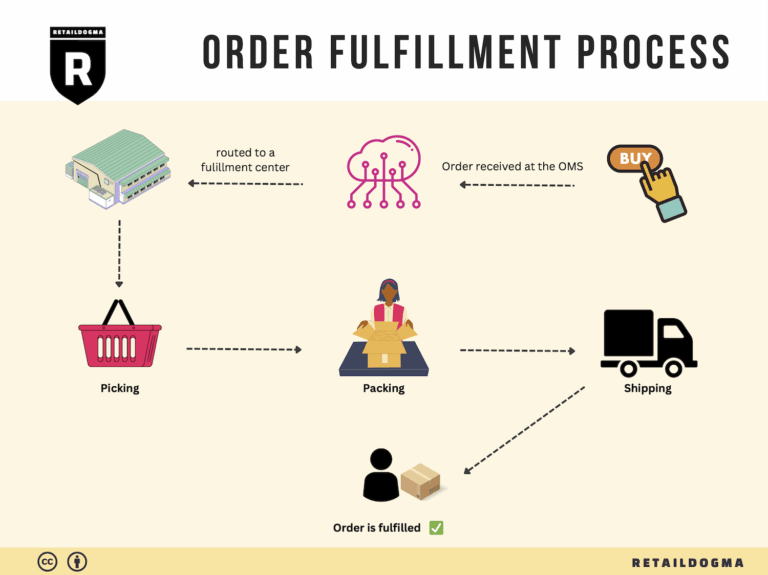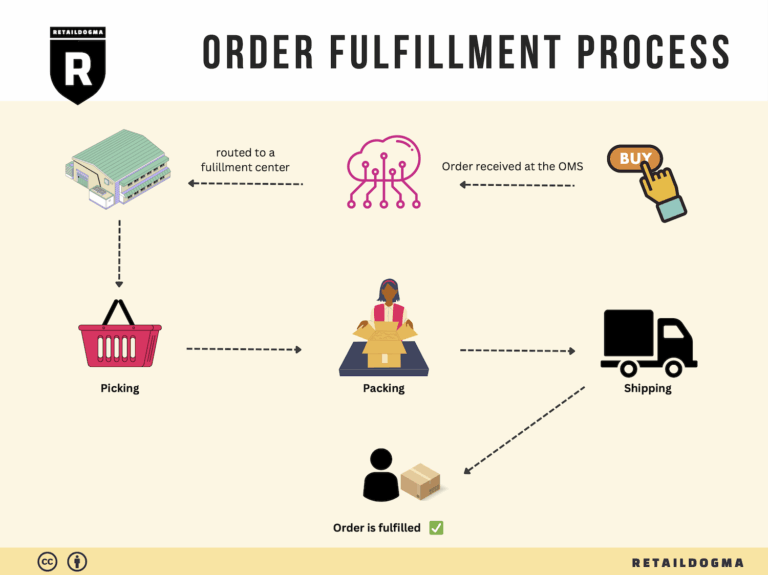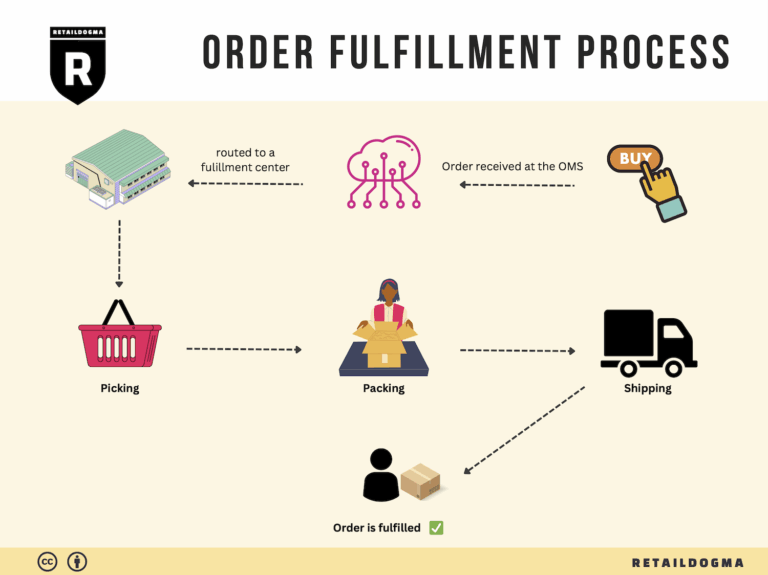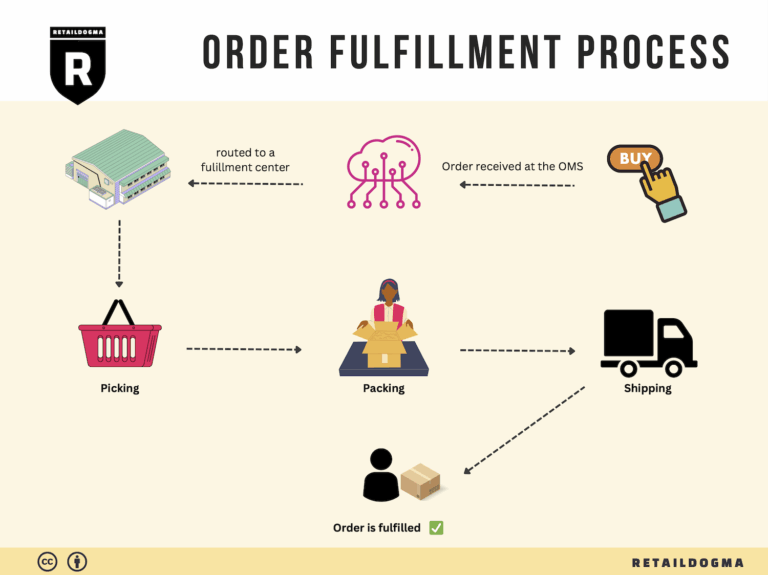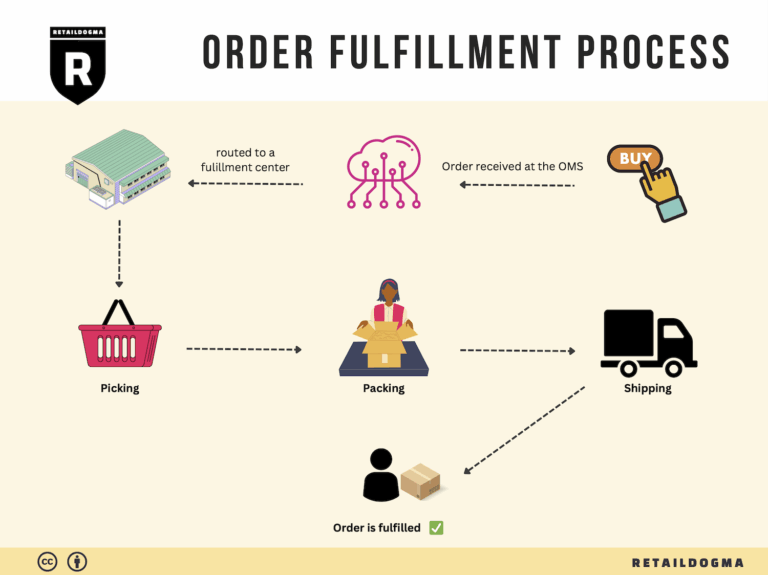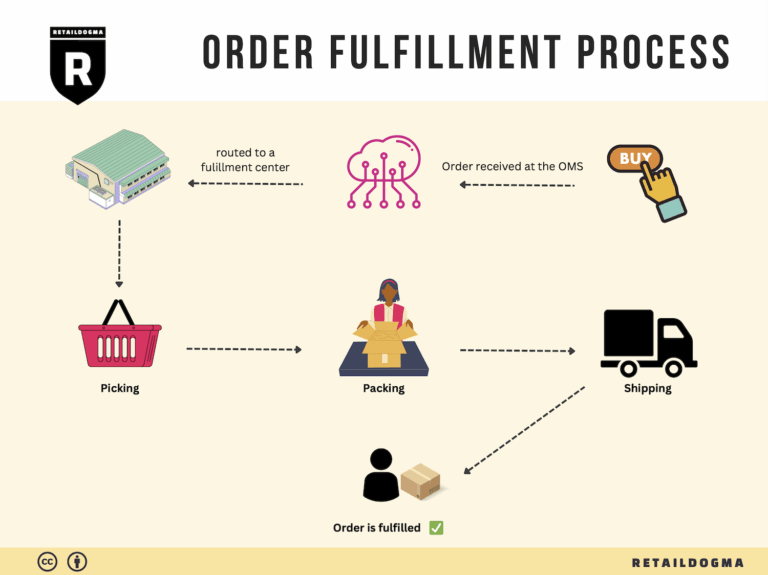Ecommerce Fulfillment Services: The Ultimate Guide (2025)
What is E-commerce Fulfillment? An Introduction for Growing Businesses
Understanding the Challenges of E-commerce Fulfillment
As an e-commerce business owner, you may find yourself grappling with a common pain point: the overwhelming task of packing and shipping orders. The excitement of growing sales can quickly turn into stress as you juggle inventory management, packing, and shipping logistics. Without a well-defined fulfillment strategy, these operational challenges can hinder your growth and impact customer satisfaction.
Fulfillment, at its core, is the process of getting a product from your inventory into the hands of your customer. This involves several key steps: receiving inventory, storing it, picking and packing orders, and finally, shipping those orders to the customer. As your business expands, the complexity of fulfillment grows, making it crucial to streamline this process.
What This Guide Covers
In this comprehensive guide, we will explore the various fulfillment models available to e-commerce businesses, such as Third-Party Logistics (3PL) and Fulfillment by Amazon (FBA). Each model offers unique advantages and can be tailored to fit your specific business needs.
You will learn about the core services that fulfillment providers offer, including inventory management, order processing, shipping, and returns handling. Understanding these services will help you make informed decisions when choosing a fulfillment partner.
Additionally, we will provide insights on how to select the right fulfillment partner for your business. Factors to consider include pricing, service offerings, technology integration, and customer support. The right partner can significantly enhance your operational efficiency and customer experience.
Finally, we will discuss pricing structures commonly used in the fulfillment industry. Understanding these costs will empower you to budget effectively and choose a solution that aligns with your financial goals.
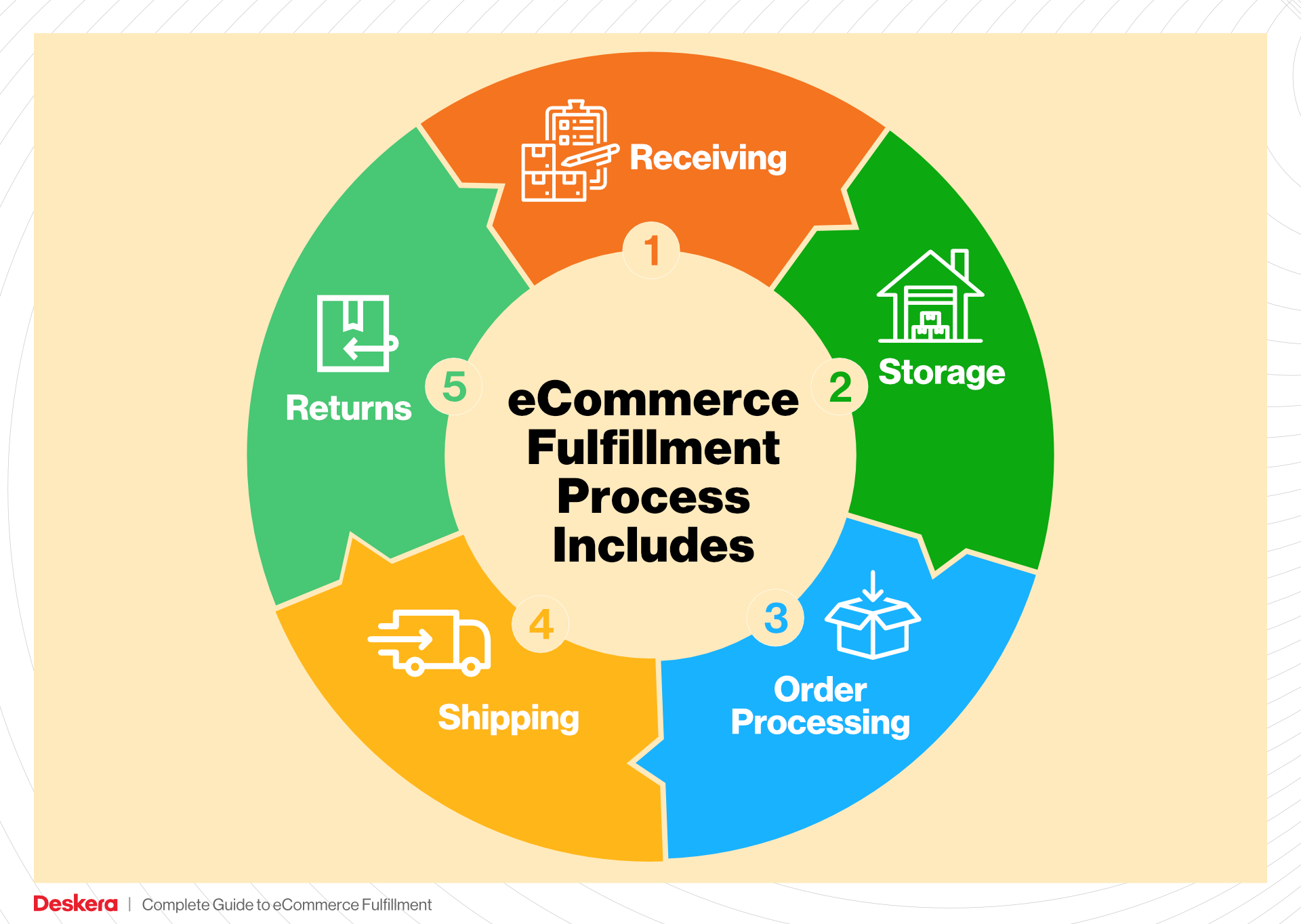
Empowering Your Logistics Decisions
The goal of this guide is to empower you with the knowledge needed to make smart decisions about your logistics operations. By understanding the intricacies of e-commerce fulfillment, you can optimize your processes, reduce operational burdens, and ultimately enhance your customers’ experience. As you navigate the complexities of scaling your e-commerce business, let this guide serve as a resource to help you streamline your fulfillment strategies and drive growth.
What You’ll Learn In This Guide
- What is E-commerce Fulfillment? An Introduction for Growing Businesses
- The Order Fulfillment Process: From ‘Buy’ Button to Customer’s Door
- Comparing Fulfillment Models: In-House vs. 3PL vs. Dropshipping
- A Deep Dive into Amazon FBA: Pros, Cons, and Who It’s For
- Core Services Offered by Fulfillment Centers
- How to Choose a Fulfillment Partner: A 6-Point Checklist
- Understanding Fulfillment Pricing: A Breakdown of Common Fees
- Frequently Asked Questions (FAQs) about Fulfillment
- Conclusion: Is Outsourcing Fulfillment the Right Move for Your Business?
- Important Disclaimer
The Order Fulfillment Process: From ‘Buy’ Button to Customer’s Door
1. Receiving Inventory
The order fulfillment process begins with receiving inventory at the fulfillment center. When products arrive, they are unloaded, checked against purchase orders, and inspected for quality. This step is crucial because it ensures that the correct items in the right quantities have been received and that they meet quality standards before being stored.
Key Term: SKU (Stock Keeping Unit)
Each product is assigned a unique SKU, which helps in tracking inventory throughout the supply chain. An efficient receiving process minimizes discrepancies and sets the stage for accurate inventory management.
2. Warehouse Storage
Once the inventory is verified, it is stored in designated areas within the warehouse. This involves organizing products in a manner that optimizes space and ensures easy access. Proper storage strategies can include categorization by product type, popularity, or size.
This step is vital as it directly impacts the efficiency of subsequent processes. Well-organized storage reduces the time spent locating products and helps maintain an accurate inventory count.
Key Term: FIFO (First In, First Out)
Many fulfillment centers utilize the FIFO method to ensure that older stock is sold before newer stock. This approach minimizes the risk of obsolescence and waste, particularly for perishable goods.
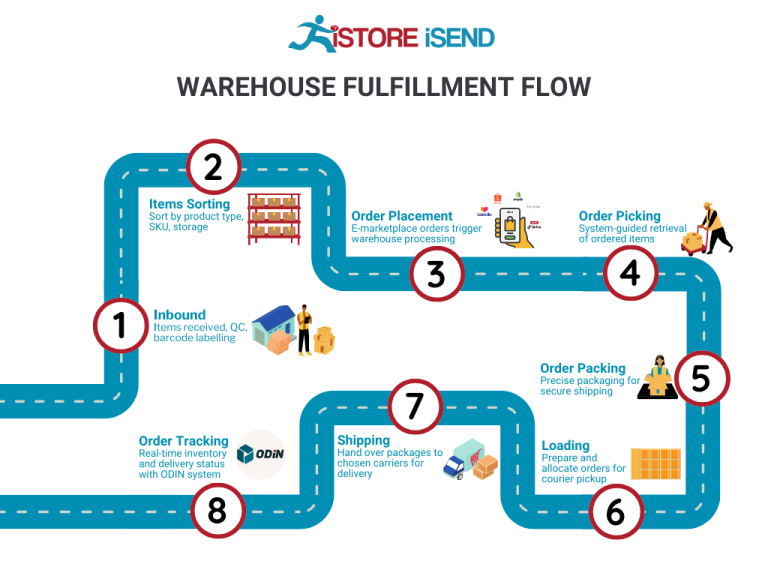
3. Order Picking
When a customer places an order, the fulfillment center must retrieve the items from their storage locations, known as order picking. Warehouse staff use pick lists, which are documents that specify the items and quantities needed for each order.
Efficient picking is crucial for timely order fulfillment and customer satisfaction. The faster and more accurately orders are picked, the better the service level and the more likely customers are to return.
Key Term: Pick Lists
These lists guide warehouse workers in selecting the right items for each order. They can be generated manually or through automated systems, depending on the technology employed by the fulfillment center.
4. Order Packing
After the items are picked, they are brought to the packing area where they are prepared for shipment. Packing involves placing items in appropriate packaging materials to protect them during transit. This step is essential not only for safeguarding the products but also for ensuring compliance with shipping regulations.
Moreover, packing is an opportunity to enhance the customer experience. Thoughtful packaging—such as including branded materials or personalized messages—can make a significant difference in customer perception.
Key Term: Packaging Materials
These include boxes, bubble wrap, and packing peanuts, which are used to secure products during transport. The choice of materials can affect shipping costs and environmental impact, so selecting the right packaging is crucial for operational efficiency.

5. Shipping & Delivery
The final step in the order fulfillment process is shipping the packed orders to customers. This involves selecting the best shipping methods based on cost, speed, and destination. Once an order is shipped, tracking information is generated, allowing customers to monitor their delivery status.
Shipping is a critical component of customer satisfaction. Timely and reliable delivery can significantly enhance the customer experience, while delays can lead to dissatisfaction and lost sales.
Key Term: Shipping Carrier
This refers to the company responsible for transporting the package to the customer, such as FedEx, UPS, or DHL. Choosing the right carrier is essential for balancing cost and delivery speed, and it can also impact the overall customer experience.
Conclusion
Understanding and optimizing each step of the order fulfillment process is vital for e-commerce businesses aiming to scale operations and enhance customer satisfaction. By focusing on efficient receiving, storage, picking, packing, and shipping, businesses can streamline their logistics, reduce operational costs, and ultimately drive growth. Implementing best practices and leveraging technology at each stage can significantly improve performance and customer loyalty.
Comparing Fulfillment Models: In-House vs. 3PL vs. Dropshipping
Fulfillment Model Comparison
| Model | Who Handles Inventory | Best For (Business Stage) | Key Advantage | Key Disadvantage |
|---|---|---|---|---|
| In-House Fulfillment | The business itself | Established businesses with stable sales | Full control over inventory and processes | High operational costs and resource intensive |
| Third-Party Logistics (3PL) | The 3PL provider | Growing businesses looking to scale | Expertise and scalability | Less control over operations and potential hidden fees |
| Dropshipping | Supplier or manufacturer | Startups and small businesses with limited capital | Low upfront investment and risk | Lower profit margins and reliance on supplier reliability |
In-House Fulfillment
In-house fulfillment refers to the process where an e-commerce business manages all aspects of its inventory and order fulfillment internally. This model is ideal for established businesses that have a steady flow of orders and sufficient resources to handle warehousing, packing, and shipping. The primary advantage of in-house fulfillment is the complete control it offers over inventory management and fulfillment processes. Businesses can customize packaging, manage quality control, and respond swiftly to customer inquiries or issues. However, this model can be resource-intensive, requiring significant investments in warehousing, staffing, and technology. As a result, operational costs can be high, and scaling operations may become challenging without the necessary infrastructure or capital.
Third-Party Logistics (3PL)
Third-party logistics (3PL) providers are external companies that manage various logistics functions, including warehousing, order fulfillment, shipping, and returns management. This model is particularly beneficial for growing e-commerce businesses that seek to scale operations without the burden of managing logistics internally. By outsourcing fulfillment to a 3PL, businesses can leverage the expertise and infrastructure of logistics professionals, which often leads to improved efficiency and customer satisfaction. 3PLs can offer a range of services, from inventory management to freight forwarding, allowing businesses to focus on core activities like marketing and product development. However, the downside is that businesses may have less control over their operations, and there can be hidden costs associated with service levels, storage, and order processing that can affect profitability if not managed carefully.
Dropshipping
Dropshipping is a fulfillment model where the retailer does not keep products in stock but instead transfers customer orders directly to a supplier or manufacturer, who then ships the products directly to the customer. This model is particularly advantageous for startups and small businesses with limited capital, as it requires minimal upfront investment in inventory. Entrepreneurs can test product viability without financial risk, making it an attractive option for those entering the e-commerce space. However, dropshipping comes with its own challenges. The most significant disadvantage is lower profit margins since the retailer typically pays a higher price per unit to the supplier. Furthermore, the reliance on suppliers means that any delays or quality issues can directly impact customer satisfaction, making it crucial for businesses to partner with reliable suppliers.
A Deep Dive into Amazon FBA: Pros, Cons, and Who It’s For
Understanding Fulfillment by Amazon (FBA)
Fulfillment by Amazon (FBA) is a service that allows e-commerce sellers to store their products in Amazon’s fulfillment centers. In this model, Amazon takes care of storage, packaging, and shipping, while also handling customer service and returns. Sellers benefit from Amazon’s extensive logistics network, enabling them to reach millions of customers with minimal upfront investment in warehousing and shipping infrastructure.
When a customer places an order for a product fulfilled by FBA, Amazon picks, packs, and ships the item directly to the customer. This not only streamlines the fulfillment process for sellers but also leverages Amazon’s trusted brand to enhance customer satisfaction.
How FBA Works
-
Inventory Setup: Sellers create an Amazon seller account and list their products. They then send their inventory to Amazon’s fulfillment centers.
-
Storage and Management: Once the products are in Amazon’s warehouses, they are stored until sold. Amazon uses sophisticated inventory management systems to track stock levels.
-
Order Fulfillment: When a customer orders a product, Amazon picks the item from the warehouse, packs it, and ships it. This process is typically fast, ensuring prompt delivery.
-
Customer Service: Amazon also manages customer service inquiries and returns for FBA products, allowing sellers to focus on other aspects of their business.
-
Payment: After the sale, Amazon deducts its fees from the sale price and transfers the remaining amount to the seller.
Pros of Using FBA
1. Prime Eligibility
One of the most significant advantages of FBA is that it makes your products eligible for Amazon Prime. This means that your items can be delivered with free two-day shipping, which is a major draw for millions of Prime members. This can lead to increased sales and higher conversion rates, as customers are more likely to purchase products that offer Prime shipping.
2. Customer Trust
Selling through Amazon’s platform, particularly with FBA, lends credibility to your brand. Customers are more inclined to buy from sellers that are backed by Amazon’s customer service and return policies. This trust can significantly impact purchasing decisions, especially for new sellers.
3. Multi-Channel Fulfillment
FBA is not limited to Amazon sales. Sellers can use FBA to fulfill orders from other sales channels, such as their own websites or other marketplaces. This multi-channel fulfillment capability allows businesses to centralize their logistics, streamline operations, and reduce shipping costs.
4. Scalability
FBA allows sellers to scale their operations without the overhead of managing fulfillment logistics. As demand for products increases, sellers can send more inventory to Amazon without needing to invest in additional warehousing or staff.
5. Efficient Returns Handling
Amazon’s returns process is customer-friendly, which often results in higher customer satisfaction. For sellers, this means less hassle managing returns and exchanges, as Amazon handles the logistics.
Cons of Using FBA
1. High Fees
While FBA can simplify logistics, it comes at a cost. Amazon charges various fees, including storage fees for the inventory stored in its warehouses and fulfillment fees for each item sold. These costs can add up quickly, especially for sellers with lower-priced items or slow-moving inventory.
2. Strict Inventory Rules
Amazon has strict guidelines regarding inventory management. Sellers must maintain accurate stock levels and adhere to specific packaging and labeling requirements. Non-compliance can lead to additional fees or even suspension of selling privileges.
3. Commingling Risks
FBA uses a commingling inventory system, meaning that multiple sellers’ products may be stored together in the same fulfillment center. This can pose risks, particularly for sellers of unique or branded items, as there is a chance that products may be mixed up, leading to potential customer service issues or brand dilution.
4. Limited Control Over Shipping
Sellers relinquish control over the shipping process when they opt for FBA. This can be a disadvantage for businesses that want to customize their packaging or include promotional materials with their shipments.
5. Dependency on Amazon
Relying on FBA means that sellers are dependent on Amazon’s policies, fees, and infrastructure. Any changes to Amazon’s terms or operational issues can directly affect a seller’s business.
Who is FBA Best For?
FBA is particularly well-suited for:
-
Small to Medium-Sized E-commerce Businesses: Sellers looking to scale operations without investing heavily in logistics infrastructure can benefit from FBA’s comprehensive services.
-
Brands Seeking Credibility: New or lesser-known brands can leverage Amazon’s trusted platform to enhance their visibility and build customer trust.
-
Sellers with High Sales Volume: Businesses that can move significant inventory quickly may find that the benefits of FBA outweigh the costs, especially when it comes to leveraging Prime membership for increased sales.
-
Multi-Channel Sellers: E-commerce businesses selling on multiple platforms can centralize their logistics through FBA, simplifying operations while reaching a broader audience.
In conclusion, while FBA offers numerous advantages that can help streamline logistics and boost sales, it is essential for sellers to carefully consider the associated costs and operational challenges. Understanding both the pros and cons will enable e-commerce business owners to make informed decisions about whether FBA is the right fit for their growth strategy.
Core Services Offered by Fulfillment Centers
Inventory Management & Warehousing
Inventory management and warehousing are foundational services provided by fulfillment centers, integral to the smooth operation of e-commerce businesses. Fulfillment centers offer a strategic solution for storing products in a controlled environment, ensuring that inventory is organized, accessible, and efficiently monitored.
What It Is:
Inventory management involves tracking stock levels, orders, sales, and deliveries. Fulfillment centers use sophisticated software systems that integrate with e-commerce platforms to maintain real-time inventory records, which helps businesses avoid stockouts or overstock situations. Warehousing, on the other hand, provides the physical space to store goods until they are needed for fulfillment.
Benefits:
1. Space Optimization: By outsourcing warehousing to a fulfillment center, businesses can save on overhead costs associated with maintaining their own storage facilities.
2. Scalability: As demand fluctuates, fulfillment centers allow businesses to easily scale their inventory storage up or down without the long-term commitment of a lease.
3. Efficient Replenishment: With real-time inventory tracking, businesses can replenish stock proactively, ensuring that popular items are always available, which can enhance customer satisfaction and sales.
4. Risk Reduction: Proper inventory management minimizes the risk of excess inventory, which can lead to increased carrying costs and potential waste, especially for perishable goods.
Pick and Pack Services
Pick and pack services are at the heart of the fulfillment process, transforming inventory into customer-ready orders. This service is crucial for ensuring that products are accurately selected and prepared for shipment.
What It Is:
Pick and pack involves two primary steps: picking the correct items from the warehouse based on customer orders and packing them securely for shipment. Fulfillment centers employ trained staff and efficient systems to ensure that this process is quick and accurate, often using barcoding technology to eliminate human error.
Benefits:
1. Speed and Accuracy: Fulfillment centers are designed for high efficiency, allowing for rapid order processing and reducing the time between order placement and delivery.
2. Quality Control: By employing standardized procedures, fulfillment centers can maintain high standards of quality control, ensuring that customers receive exactly what they ordered.
3. Cost Efficiency: Outsourcing pick and pack services allows e-commerce businesses to save on labor costs and training, as the fulfillment center takes care of staffing and operational training.
4. Focus on Core Competencies: With the logistics of order fulfillment handled by experts, e-commerce businesses can concentrate on marketing, product development, and customer engagement, driving growth and innovation.
Kitting and Assembly
Kitting and assembly services offer a value-added solution for e-commerce businesses looking to provide customized product offerings or bundled items.
What It Is:
Kitting involves assembling various individual products into a single packaged unit, ready for sale. This could be as simple as combining multiple items into a gift set or as complex as creating a product that requires assembly before it can be sold. Fulfillment centers provide the necessary resources and labor to manage this process effectively.
Benefits:
1. Enhanced Customer Experience: By offering bundled products or kits, businesses can create unique shopping experiences that appeal to customers and encourage larger purchases.
2. Streamlined Operations: Fulfillment centers manage the complexities of kitting and assembly, allowing businesses to save time and avoid the headache of in-house management.
3. Inventory Management: Kitting can help reduce the number of SKUs a business needs to manage, simplifying inventory processes and storage requirements.
4. Flexibility and Customization: Fulfillment centers can quickly adapt to changing market demands, allowing businesses to introduce new kits or modify existing ones with minimal disruption.
Returns Management (Reverse Logistics)
Returns management, or reverse logistics, is an essential service for e-commerce businesses, providing a systematic approach to handling returns efficiently and effectively.
What It Is:
Returns management encompasses all processes involved in handling returned goods, from receiving and inspecting returned items to restocking or disposing of them. Fulfillment centers have the infrastructure and expertise to manage this complex process, often integrating it with their inventory management systems.
Benefits:
1. Customer Satisfaction: Efficient handling of returns can significantly enhance customer satisfaction and loyalty, as a smooth return process can encourage repeat business.
2. Cost Recovery: By efficiently processing returns and determining the best course of action for each item (restock, refurbish, or dispose), businesses can recover costs and minimize losses.
3. Data Insights: Fulfillment centers can provide businesses with valuable insights into return trends, helping them understand product issues and customer preferences, which can inform future product development and marketing strategies.
4. Streamlined Operations: Outsourcing returns management allows e-commerce businesses to focus on their core operations, freeing up resources and ensuring that returns do not disrupt the overall logistics flow.
In summary, fulfillment centers provide a suite of core services that are crucial for the success of e-commerce businesses. By leveraging these services, businesses can optimize their operations, enhance customer satisfaction, and ultimately drive growth.
How to Choose a Fulfillment Partner: A 6-Point Checklist
Location & Warehouse Network
When selecting a fulfillment partner, the geographical location of their warehouses can significantly impact your logistics efficiency. A strategically located warehouse network can reduce shipping times and costs, enhancing customer satisfaction.
Why It’s Important:
– Proximity to major markets can lead to faster delivery times.
– Access to multiple shipping carriers can provide cost-effective options.
– A wide network allows for better inventory management and distribution.
Questions to Ask:
1. Where are your fulfillment centers located, and how do they align with our target markets?
2. How many warehouses do you operate, and what regions do they cover?
3. Can you provide insight into your shipping partnerships and capabilities for both domestic and international orders?
Technology & Integrations
A fulfillment partner’s technology stack plays a crucial role in the efficiency and accuracy of order processing. The right technology can streamline operations, provide real-time data, and integrate seamlessly with your e-commerce platform.
Why It’s Important:
– Real-time inventory tracking minimizes stockouts and overstock situations.
– Automated order processing reduces human error and speeds up fulfillment.
– Integration with e-commerce platforms facilitates smoother operations and better customer experience.
Questions to Ask:
1. What technology do you use for inventory management, order processing, and shipping?
2. Can your system integrate with our existing e-commerce platform (e.g., Shopify, WooCommerce)?
3. What kind of reporting and analytics capabilities do you offer?
Specializations (e.g., Cold Storage, Oversized Items)
Depending on your product offerings, you may require specific handling capabilities. Whether you deal in perishables, oversized items, or fragile goods, a partner with the right specializations can make a significant difference.
Why It’s Important:
– Specialized facilities ensure that products are stored and handled according to their specific requirements, reducing the risk of damage.
– Partners with relevant experience can navigate compliance and regulatory issues related to certain products.
Questions to Ask:
1. What specific specializations do you offer (e.g., cold storage, hazardous materials, oversized items)?
2. Can you provide examples of how you have successfully managed similar products in the past?
3. What certifications or standards do you comply with in handling specialized goods?
Scalability & Capacity
As your business grows, your fulfillment partner must be able to scale alongside you. A partner with adequate capacity can handle fluctuations in order volume without compromising service quality.
Why It’s Important:
– Flexibility in scaling up or down based on demand can help manage costs effectively.
– A partner that can accommodate growth helps ensure that you can meet customer expectations during peak seasons.
Questions to Ask:
1. What is your current capacity for handling orders, and how have you managed peak seasons in the past?
2. What processes do you have in place for scaling operations in response to increased demand?
3. Are there any limitations to your scalability that we should be aware of?
Pricing and Contracts
Understanding the pricing structure and contract terms is essential for budgeting and ensuring that there are no hidden fees that could affect your margins. A transparent pricing model allows you to make informed decisions.
Why It’s Important:
– Clear pricing helps you forecast logistics costs and manage budgets effectively.
– Knowing contract terms, including length and exit strategies, is vital for planning your long-term logistics strategy.
Questions to Ask:
1. What is your pricing structure, and what services are included?
2. Are there any additional fees we should be aware of (e.g., for storage, returns, or special handling)?
3. What are the terms of the contract, including duration, renewal, and cancellation policies?
Customer Support & Reviews
Customer support can make or break your experience with a fulfillment partner. Responsive and knowledgeable support staff can assist you in resolving issues quickly and maintaining smooth operations.
Why It’s Important:
– Effective customer support can help mitigate problems before they escalate, ensuring that your customers remain satisfied.
– Positive reviews and testimonials can provide insights into a partner’s reliability and service quality.
Questions to Ask:
1. What kind of customer support do you offer (e.g., dedicated account manager, 24/7 support)?
2. How do you handle issues or discrepancies in order fulfillment?
3. Can you provide references or case studies from current or past clients?
In conclusion, selecting the right fulfillment partner is a critical decision that can significantly impact your e-commerce business’s success. By following this checklist and asking the right questions, you can ensure that you choose a partner that aligns with your operational needs and growth ambitions.
Understanding Fulfillment Pricing: A Breakdown of Common Fees
Initial Setup Fees
When partnering with a third-party logistics (3PL) provider, initial setup fees are often the first costs you’ll encounter. These fees cover the onboarding process, which may include integrating your e-commerce platform with the 3PL’s systems, setting up inventory management software, and configuring order processing workflows.
The calculation of initial setup fees can vary significantly among providers, typically ranging from a few hundred to several thousand dollars, depending on the complexity of your operations and the level of customization required. To minimize costs, ensure you clearly communicate your needs and expectations during the negotiation phase. Some providers may waive these fees as part of a promotional offer or if you commit to a longer-term contract.
Receiving Fees
Receiving fees are charged when your inventory arrives at the fulfillment center. These fees cover the labor and resources needed to unload, inspect, and store your products. Receiving fees can be calculated based on the number of pallets, boxes, or individual items received.
Typically, you might see charges like $25 to $50 per pallet or a per-item fee that can range from $0.10 to $0.50. To get a better understanding of your potential receiving costs, ask your 3PL for a breakdown of their receiving process and how they calculate these fees. It’s essential to factor these costs into your budget, especially if you plan to frequently send large shipments.
Storage Fees (per pallet/bin)
Storage fees are recurring charges for keeping your inventory in the fulfillment center. These fees can be structured in various ways, but they are commonly calculated on a per-pallet or per-bin basis. For example, you might encounter storage fees of $15 to $30 per pallet per month or $5 to $10 per bin per month.
Factors influencing storage fees include the size of your inventory, seasonal fluctuations in demand, and the length of time your products are stored. To optimize your storage costs, consider implementing just-in-time inventory practices or negotiating for lower fees based on volume commitments with your 3PL provider. Additionally, be aware of any potential overage charges for exceeding your allocated storage space, which can significantly impact your overall fulfillment costs.
Pick & Pack Fees (per item/order)
Pick and pack fees cover the labor involved in retrieving items from storage, packing them for shipment, and preparing them for delivery. These fees are typically charged per item or per order, with costs ranging from $0.50 to $2.00 per item or $2.00 to $5.00 per order, depending on the complexity and volume of the orders.
The calculation of pick and pack fees can be influenced by factors such as the number of items in an order, special packing requirements, or additional services like kitting (combining multiple items into a single package). To manage these costs effectively, consider streamlining your product offerings or optimizing your inventory to reduce the number of items picked per order. Discussing potential discounts for higher order volumes can also lead to cost savings.
Shipping Fees
Shipping fees are among the most variable costs in the fulfillment pricing structure. These fees depend on multiple factors, including the shipping carrier, package weight and dimensions, delivery speed, and the destination. 3PL providers often negotiate shipping rates with carriers, allowing them to offer competitive pricing to their clients.
Shipping fees can be calculated as a flat rate, based on weight, or using a dimensional weight pricing model. For example, you might pay $5 to $15 for standard shipping within the U.S., while international shipping can be significantly higher. To get the best shipping rates, work closely with your 3PL to understand their partnerships with carriers and explore options like zone skipping, which can lower shipping costs by consolidating packages.
Conclusion: Tips for Getting an Accurate Quote
To obtain an accurate quote for fulfillment services, follow these practical steps:
-
Be Transparent: Provide detailed information about your product types, shipping volumes, and special requirements. Transparency helps 3PLs assess your needs accurately.
-
Request Itemized Pricing: Ask for a breakdown of all potential fees, including setup, receiving, storage, pick and pack, and shipping. This will give you a clear picture of your total costs.
-
Compare Multiple Providers: Don’t settle for the first quote. Comparing multiple 3PLs can help you identify the best value and services for your business.
-
Inquire About Discounts: Ask about volume discounts or promotional offers. Many 3PLs are willing to negotiate based on your projected shipping volumes.
-
Review Contract Terms: Carefully examine the contract terms, including any hidden fees or minimum volume commitments that could affect your overall costs.
By understanding these common fees and following these tips, you can make informed decisions that will help your e-commerce business scale efficiently and effectively.
Frequently Asked Questions (FAQs) about Fulfillment
1. What is a 3PL (Third-Party Logistics) provider?
A 3PL provider is a company that offers outsourced logistics services, including warehousing, transportation, inventory management, order fulfillment, and shipping. By partnering with a 3PL, businesses can streamline their supply chain operations, allowing them to focus on core activities like product development and marketing.
2. How does a fulfillment center differ from a warehouse?
While both fulfill the role of storing goods, a fulfillment center is designed specifically for order fulfillment. It handles the entire process from receiving inventory to picking, packing, and shipping orders directly to customers. In contrast, a warehouse primarily serves as a storage facility, often for longer durations, without the operational processes required for order fulfillment.
3. What services do fulfillment companies typically offer?
Fulfillment companies typically offer a range of services, including inventory management, order processing, packing and shipping, returns handling, kitting and assembly, and technology integration with e-commerce platforms. These services help businesses efficiently manage their logistics and enhance customer satisfaction.
4. How much do fulfillment services cost?
The cost of fulfillment services varies based on several factors, including the volume of orders, the weight and size of products, and additional services like returns management or kitting. Most fulfillment companies provide pricing models that include storage fees, pick-and-pack fees, and shipping costs. It’s advisable to request a detailed quote to understand the specific pricing structure based on your business needs.
5. Can a fulfillment company help with international shipping?
Yes, many fulfillment companies offer international shipping solutions as part of their services. They typically have established partnerships with global carriers and can manage customs clearance, documentation, and logistics to ensure timely delivery to international customers.
6. What are the benefits of using a 3PL provider for my e-commerce business?
Utilizing a 3PL provider allows e-commerce businesses to scale operations without the overhead of managing warehousing and logistics in-house. Benefits include reduced shipping costs, access to advanced technology for inventory management, faster order processing, and the ability to focus on core business functions while leveraging the expertise of logistics professionals.
7. How do I choose the right fulfillment partner for my business?
When selecting a fulfillment partner, consider factors such as their experience in your industry, technology capabilities, pricing structure, shipping options, and customer service. It’s essential to assess their ability to scale with your business and meet your specific logistics needs, including handling returns and managing inventory effectively.
8. What should I know about integrating my e-commerce platform with a fulfillment service?
Integration is crucial for seamless operations. Most fulfillment companies provide APIs or integrations with popular e-commerce platforms like Shopify, WooCommerce, or Amazon. This integration allows for real-time inventory tracking, automatic order processing, and streamlined communication between your online store and the fulfillment center, enhancing overall efficiency.
9. What is the typical order fulfillment process in a 3PL?
The typical order fulfillment process in a 3PL includes several key steps:
1. Receiving inventory and storing it in the fulfillment center.
2. Monitoring inventory levels and managing stock replenishment.
3. Processing orders as they come in from your e-commerce platform.
4. Picking the ordered items from the inventory.
5. Packing the items for shipment.
6. Shipping the orders to customers and providing tracking information.
7. Handling returns and managing reverse logistics as necessary.
10. Are there any drawbacks to using third-party fulfillment services?
While there are numerous benefits to using third-party fulfillment services, potential drawbacks include a loss of control over the fulfillment process, reliance on the provider’s capabilities and performance, and possible communication challenges. It’s essential to conduct thorough due diligence and establish clear expectations to mitigate these risks.
Conclusion: Is Outsourcing Fulfillment the Right Move for Your Business?
Evaluating the Benefits of Outsourcing Fulfillment
Outsourcing fulfillment can be a game-changer for your e-commerce business, providing numerous advantages that can significantly enhance your operational efficiency. First and foremost, partnering with a fulfillment service saves you valuable time. By entrusting inventory management, order processing, and shipping to experts, you can redirect your focus toward core business activities such as product development and marketing. This not only streamlines your operations but also allows you to respond more swiftly to market demands.
Scalability is another critical benefit of outsourced fulfillment. As your business grows, so do the complexities of logistics. A reputable third-party logistics (3PL) provider can adapt to your increasing order volumes without the need for significant investments in infrastructure or technology. This flexibility ensures that you can scale your operations seamlessly, whether you’re expanding into new markets or launching new product lines.
Moreover, expertise in logistics is a defining advantage of using a fulfillment service. 3PL companies bring specialized knowledge in inventory management, shipping logistics, and customer service, which can enhance your overall customer experience. They stay updated with industry trends and best practices, allowing you to leverage their expertise for improved efficiency and reduced costs.
However, the success of outsourcing fulfillment hinges on selecting the right partner. Not all 3PL providers offer the same level of service or fit your specific business needs. Conducting thorough research and due diligence is paramount to ensure alignment with your growth goals.
Call to Action
As you contemplate whether to outsource your fulfillment, consider conducting an audit of your current shipping processes. Evaluate your pain points, costs, and the time spent on logistics. This analysis will provide clarity on whether a fulfillment partner could be the strategic next step for your business growth. Taking the leap could not only enhance your efficiency but also position your brand for greater success in the competitive e-commerce landscape.
Important Disclaimer
⚠️ Important Disclaimer
The information in this guide is for educational purposes. Fulfillment services, pricing, and platform features change frequently. Always conduct your own due diligence and consult with providers directly before making business decisions.

